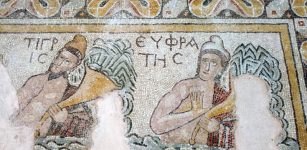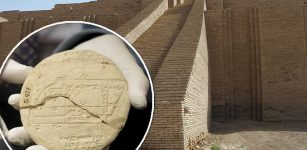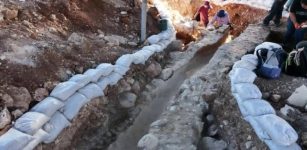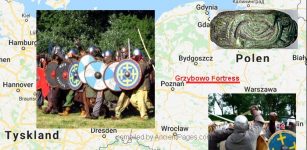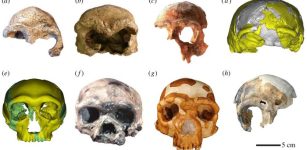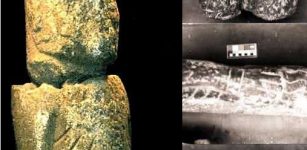Ancient DNA’s Analysis Delivers Crucial Clues To Migratory Patterns During The First Millennium AD
Conny Waters - AncientPages.com - Research conducted by the Francis Crick Institute has unveiled patterns of human migration across Europe during the first millennium AD.
Image credit: GrumpyBeere – Pixabay
Researchers used a refined method of ancestry analysis utilizing ancient DNA. This study represents a significant advancement in our understanding of historical population movements.
Researchers can trace human migration through DNA changes, but it's challenging when historical groups are genetically similar.
Today's research in Nature introduces Twigstats, a data analysis method that precisely measures differences between genetically similar groups, revealing new details about European migrations.
They applied the new method to over 1500 European genomes from individuals mainly living during the first millennium AD, including the Iron Age, the fall of the Roman Empire, the early medieval 'Migration Period,' and the Viking Age.
How does Twigstats work?
The extent of genetic mutations, or variations in our DNA, shared with another individual correlates with the degree of relatedness between us. This phenomenon arises from the inheritance of DNA through our ancestors, resulting in the transmission of identical mutations they possess. Consequently, our DNA serves as a representation of the genetic 'family trees' that interlink us all.
Recently, scientists have reconstructed genetic family trees by examining shared mutations, linking our DNA with ancient people's DNA. These trees show the age and sharing of mutations.
Twigstats analyzes these trees to identify DNA inheritance, focusing on recent mutations to reveal connections among people who lived closer in time.
Germanic-speaking people move south in the early Iron Age
The Romans, whose empire thrived at the start of the first millennium, wrote about conflicts with Germanic groups beyond their frontiers.
Three waves of migrations across Europe were identified in the paper. Source
Using the new method, the scientists revealed waves of these groups migrating south from Northern Germany or Scandinavia early in the first millennium, adding genetic evidence to the historical record. This ancestry was found in people from southern Germany, Italy, Poland, Slovakia, and southern Britain, with one person in southern Europe carrying 100% Scandinavian-like ancestry.
The team showed that many groups mixed with existing populations. The two main migration and interaction zones reflect the three main Germanic language branches: one remained in Scandinavia, one became extinct, and another formed modern German and English.
Finding a Roman gladiator?
In the period spanning the 2nd to 4th centuries in York, Britain, it has been determined that approximately 25% of the ancestry of an individual, potentially a Roman soldier or slave gladiator, originated from early Iron Age Scandinavia. This finding underscores the presence of individuals with Scandinavian lineage in Britain prior to the commencement of the Anglo-Saxon and Viking eras in the 5th century AD.
Germanic-speaking people move north into Scandinavia before the Viking Age
Subsequently, the team employed the method to identify a subsequent northward migratory wave into Scandinavia at the conclusion of the Iron Age (300-800 AD), immediately preceding the Viking Age. Their findings demonstrated that numerous individuals from the Viking Age throughout southern Scandinavia possessed ancestry originating from Central Europe.
A distinct form of biomolecular analysis conducted on dental remains has revealed that individuals interred on the island of Öland, Sweden, who possessed ancestry tracing back to Central Europe, had actually been raised locally. This finding indicates that the northward migration of these populations was not merely a singular event but rather represents a sustained alteration in ancestral lineage.
There is archaeological evidence for repeated conflicts in Scandinavia at this time, and the researchers speculate that this unrest may have played a role in driving movements of people, but more archaeological, genetic and environmental data is needed to shed light on the reasons why people moved into and around Scandinavia.
Viking expansion out of Scandinavia
The Viking Age (c. 800-1050 AD) involved Scandinavians raiding and settling across Europe. Research indicates a mix of local and Scandinavian ancestry outside Scandinavia, aligning with historical records. For example, individuals in present-day Ukraine and Russia had Swedish ancestry, while those in Britain had Danish ancestry.
In Viking Age mass graves in Britain, the remains of men who died violently showed genetic links to Scandinavia, suggesting they may have been executed members of Viking raiding parties.
Adding genetic evidence to historical accounts
Leo Speidel, first author, former postdoctoral researcher at the Crick and UCL and now group leader at RIKEN, Japan, said: “We already have reliable statistical tools to compare the genetics between groups of people who are genetically very different, like hunter-gatherers and early farmers, but robust analyses of finer-scale population changes, like the migrations we reveal in this paper, have largely been obscured until now.
“Twigstats allows us to see what we couldn’t before, in this case migrations all across Europe originating in the north of Europe in the Iron Age, and then back into Scandinavia before the Viking Age. Our new method can be applied to other populations across the world and hopefully reveal more missing pieces of the puzzle.”
Pontus Skoglund, Group Leader of the Ancient Genomics Laboratory at the Crick, and senior author, said: “The goal was a data analysis method that would provide a sharper lens for fine-scale genetic history. Questions that wouldn't have been possible to answer before are now within reach to us, so we now need to grow the record of ancient whole-genome sequences.”
Peter Heather, Professor of Medieval History at King’s College London, and co-author of the study, said: "Historical sources indicate that migration played some role in the massive restructuring of the human landscape of western Eurasia in the second half of the first millennium AD which first created the outlines of a politically and culturally recognisable Europe, but the nature, scale and even the trajectories of the movements have always been hotly disputed. Twigstats opens up the exciting possibility of finally resolving these crucial questions."
Written by Conny Waters - AncientPages.com Staff Writer






